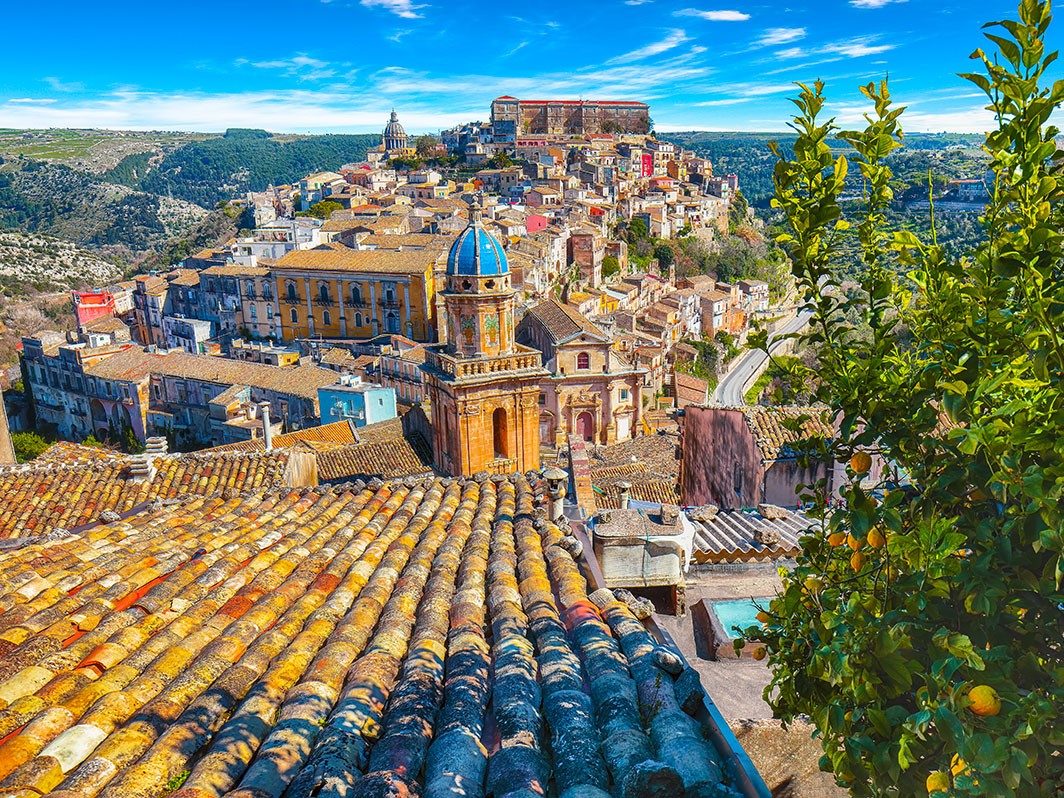
 We the Italians Editorial Staff
We the Italians Editorial Staff
Italian territories: Vallo di Noto, where baroque beauty meets ancient earth
- WTI Magazine #190 Aug 09, 2025
-

 We the Italians Editorial Staff
We the Italians Editorial Staff
The exact origins of the word "Vallo" remain uncertain, with scholars debating whether it comes from Latin or Arabic roots. Historically, the Vallo di Noto was a major administrative division of the Kingdom of Sicily, responsible for overseeing justice, taxes, and occasionally military matters. It remained in place from the Norman era until 1818, when it was dissolved and divided into smaller districts governed from Siracusa, Catania, and Caltanissetta.
The area experienced profound transformation after the devastating earthquake of 1693, which left much of southeastern Sicily in ruins. The rebuilding efforts that followed in the early 18th century gave rise to an extraordinary wave of artistic and architectural innovation. The cities reborn from the rubble adopted a shared vision of the late Baroque style - an aesthetic so cohesive and exceptional that, in 2002, UNESCO declared eight of these towns a World Heritage Site.
These towns - Caltagirone, Militello Val di Catania, Catania, Modica, Noto, Palazzolo Acreide, Ragusa, and Scicli - were recognized for their artistic and cultural value, representing the peak and final flourishing of European Baroque architecture. They showcase an extraordinary level of unity in style, a result of their simultaneous reconstruction after the earthquake. UNESCO also acknowledged the ongoing risks to these cities from natural threats, including earthquakes and volcanic activity from nearby Mount Etna.
Each town reflects the Baroque in its own unique way, influenced by local materials. In Catania, for instance, the style leans toward darker tones due to the use of volcanic rock, while in Noto, the buildings glow with a warm golden hue, thanks to the region’s distinctive limestone. Among the towns recognized by UNESCO, three - Noto, Ragusa, and Caltagirone - have their entire historic centers protected, while others include specific monuments or neighborhoods.
In 1997, UNESCO had already awarded World Heritage status to the Villa Romana del Casale in Piazza Armerina, a remarkable Roman villa with stunning mosaics. Later, in 2005, two more locations from the Vallo di Noto region were added to the list: the city of Syracuse and the Rock-Cut Necropolis of Pantalica, further reinforcing the area’s cultural significance.
Geographically, Vallo di Noto is shaped by the rugged landscapes of the Hyblaean and Erei mountain ranges. The terrain is marked by deep ravines and seasonal rivers, creating dramatic, often isolated environments. The region lies atop the ancient Hyblaean Plateau, composed of sedimentary layers and prehistoric lava flows from long-extinct volcanic activity. Along the northern border of the valley runs the seismic boundary between the Eurasian and African tectonic plates - an unstable zone that has led to several powerful earthquakes throughout history, most notably in 1542 and 1693.
But Vallo di Noto is more than just baroque splendor and geological intrigue - it’s also home to some of the most breathtaking coastlines in all of Italy. With its warm climate and long tourist season stretching from spring through late fall, the region welcomes thousands of visitors each year eager to swim in its clear, shallow waters and relax on its soft, sandy beaches interspersed with rocky coves.
From Syracuse to Ragusa, the southeastern coastline is dotted with natural wonders like the Vendicari Nature Reserve, the Plemmirio Marine Protected Area, and the salt marshes of Pachino. Whether you're interested in nature hikes or a lazy day at a beachside resort, the region offers something for every kind of traveler. Family-friendly beaches with calm, crystal-clear water exist alongside wilder stretches of coast, giving visitors the freedom to choose between rustic charm and modern convenience.
Away from the sea, the countryside reveals a quieter, timeless Sicily. Dry-stone walls trace the edges of olive groves and carob trees, while rural roads wind through hilltop towns where daily life moves at a slower pace. Here, it’s not unusual to be greeted by locals as you pass through sun-drenched piazzas that seem frozen in the 1950s, where neighborhood cafés still serve as the heartbeat of the community.
Nature lovers will find even more to explore inland. From the Buccheri Snow Pits, with panoramic views of Mount Etna and the Gulf of Catania, to the hidden caves and canyons of the region’s vast nature reserves, the options are endless. The Pantalica Necropolis, with its thousands of tombs carved into limestone cliffs, is one of the most fascinating archaeological sites in all of Sicily. Dating back to prehistoric times, these burial sites and ancient settlements show that the region was already inhabited well before the arrival of the Greeks, thanks to its abundance of water and easily workable terrain.
The southeast of Sicily is a patchwork of civilizations, where layers of history are stacked beneath every stone. From early Sicilian tribes to the grandeur of Magna Graecia, every corner whispers of forgotten temples, ancient theaters, and traditions that have stood the test of time. Museums today preserve these echoes of the past with pride, showcasing artifacts that reveal the enduring cultural legacy of this remarkable region.
Still, Vallo di Noto isn’t just about grandeur or antiquity. As you move between its towns and countryside, you’ll find that the true soul of the region lives in its smaller villages and quiet corners. In places far from the tourist trail, locals offer a warm, respectful welcome to travelers. Narrow alleys lead to charming squares overlooking the sea; tiny fishing ports could easily serve as film sets, where daily life continues in perfect harmony with nature and history.
In Vallo di Noto, architecture, community, and the landscape itself tell a story - one that continues to inspire, surprise, and move all who visit.